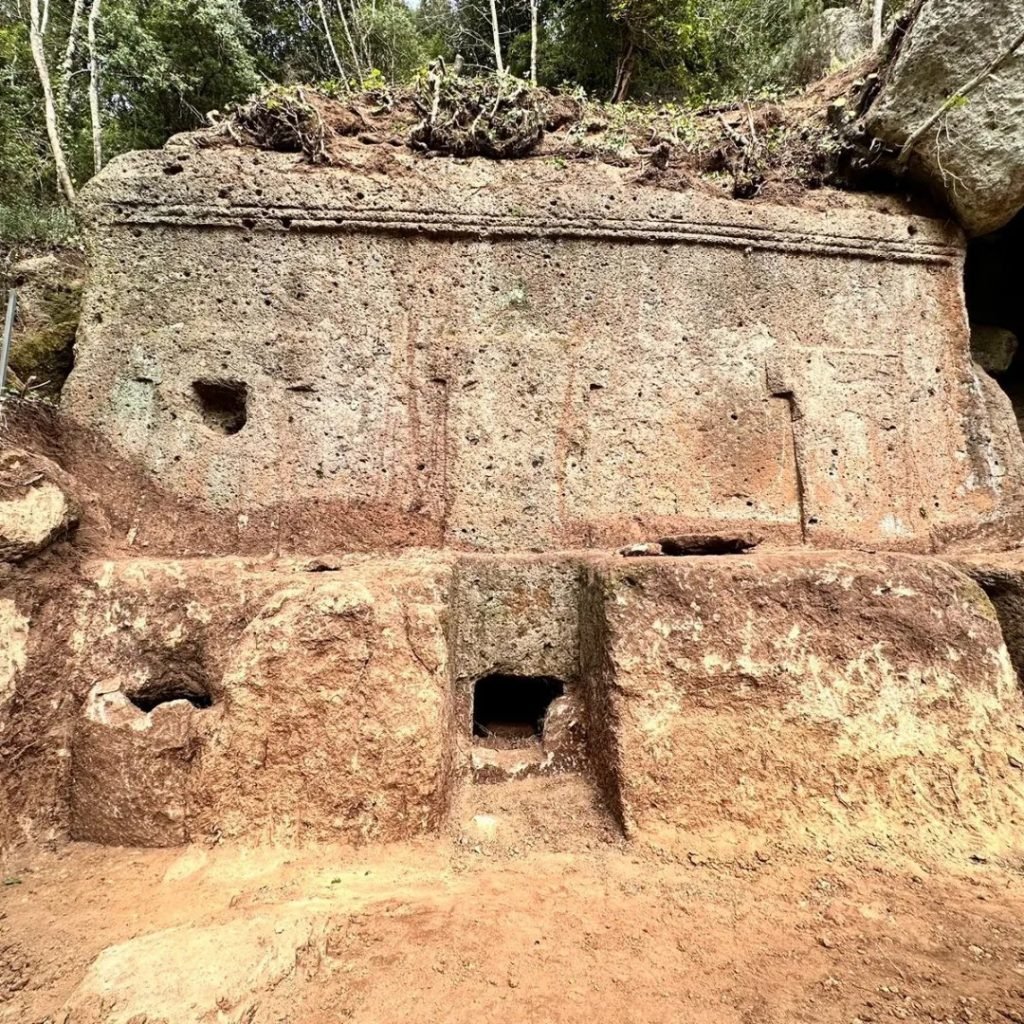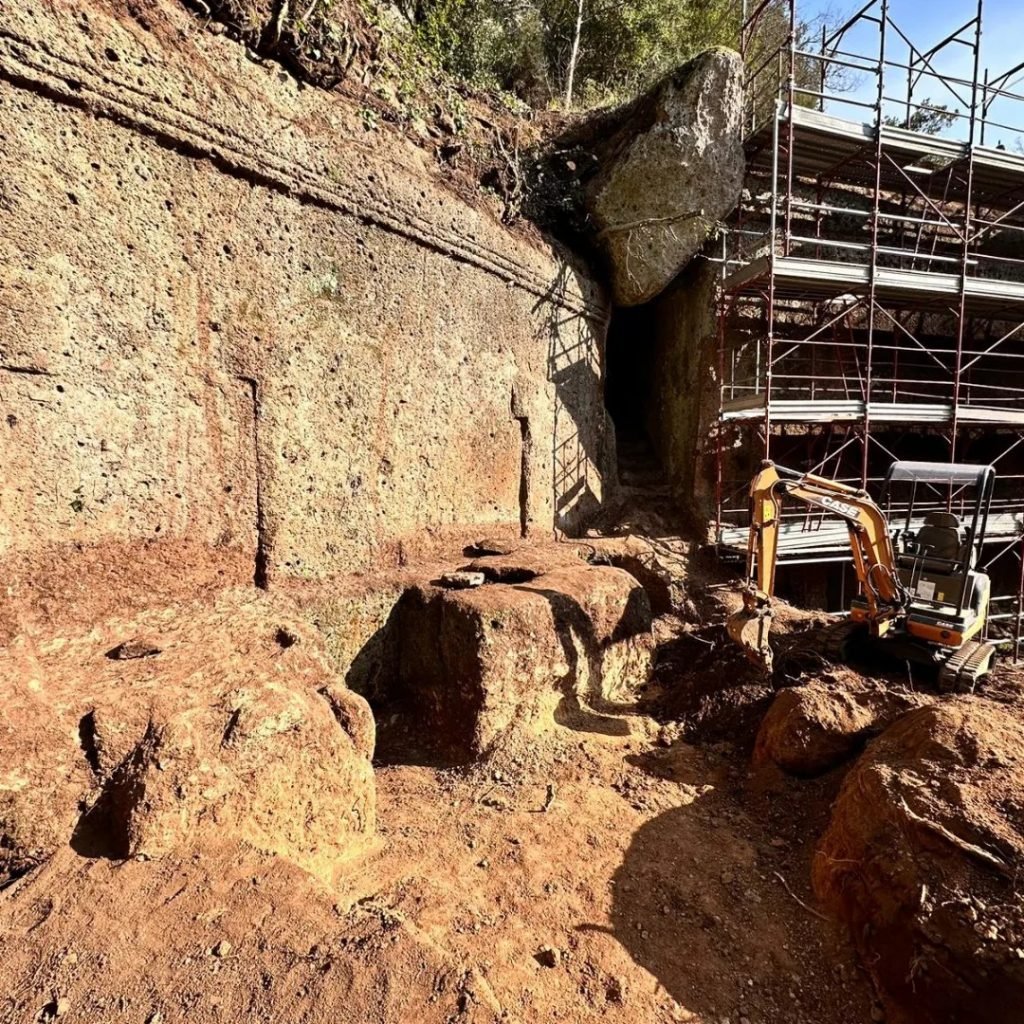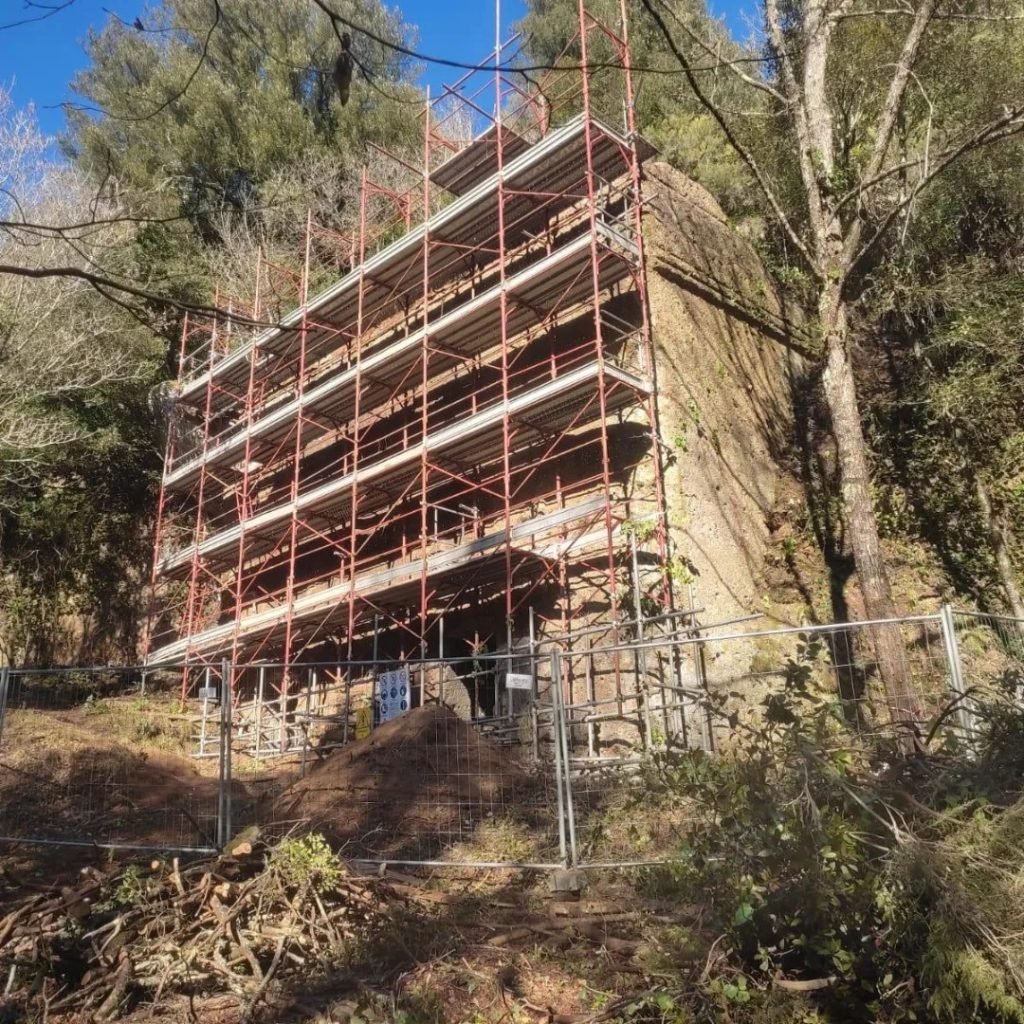Archaeology & History
A Massive Ancient Etruscan Stone Tomb, Hiding in Plain Sight, Is Uncovered in Italy
The new tomb came to light after some clean-up and brush-clearing.

The new tomb came to light after some clean-up and brush-clearing.

Artnet News

An Italian archaeology authority has announced an enticing find: a giant, cube-shaped stone tomb that was hiding behind foliage in the ancient San Giuliano Rock Necropolis has come to light.
The necropolis, which has been found to contain some 500 graves ranging in date from the 7th century B.C.E. to the 3rd century B.C.E., lies in the Regional Park of Marturanum, near the municipality of Barbarano Romano in central Italy, about 45 miles northwest of Rome. The necropolis is reached only by navigating ravines and an overgrown forest.
The firm Gentili Restauri, in collaboration with local authorities, conducted the operation by which the new tomb was discovered. It came to light after some clean-up operations and the removal of overgrowth. The well-preserved new tomb was only partially visible previously. (The photo below shows an earth-moving vehicle, giving a sense of the scale of the newly uncovered tomb.)

The new tomb, left, and the Queen’s Tomb, right. Courtesy Superintendency of Archaeology, Fine Arts and Landscape in Southern Etruria.
The tomb is referred to as a “semi-cube” layout, in which one side is open and three sides are dug into a rock wall. It lies just next to the Queen’s Tomb, the largest in the necropolis, which measures some 46 feet wide and 32 feet high and dates back to the fifth century B.C.E.
The Queen’s Tomb has side stairs leading to an upper terrace and two semi-finished Doric doors that lead into two twin funeral chambers with benches and locations.

The Queen’s Tomb. The new tomb, left, and the Queen’s Tomb, right. Courtesy Superintendency of Archaeology, Fine Arts and Landscape in Southern Etruria.
The Etruscans were an ancient society that preceded the Romans and lived in Etruria, Italy, between the Arno and Tiber Rivers west and south of the Appenines. Etruscan society reached its peak in the 6th century B.C.E. They are known from their cemeteries and sanctuaries, some of which contain extensive painted murals, from their pottery, and finely worked bronze objects.
The new discovery was announced in a Facebook post by the Superintendency of Archaeology, Fine Arts and Landscape in Southern Etruria, which will inform followers of public opening dates.